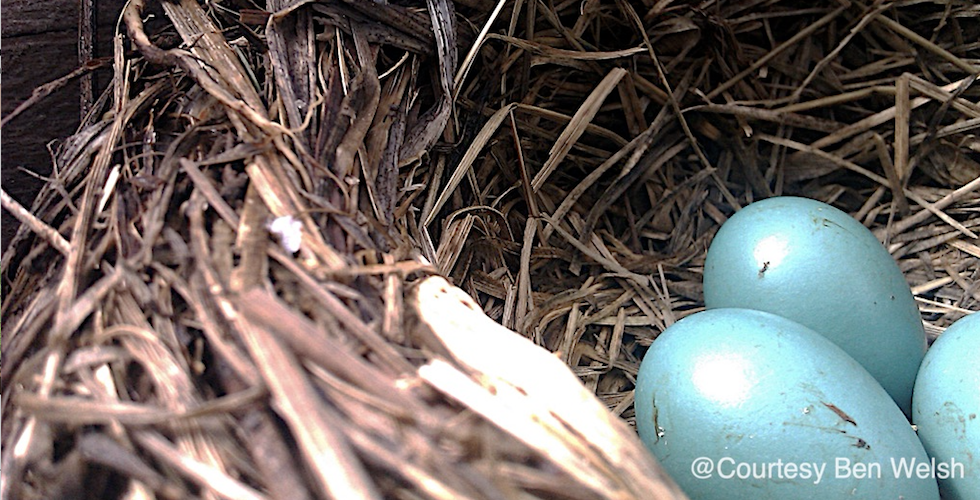
A Natural Easter Egg Hunt
In today’s post, Adventure Publications author and editor Brett Ortler talks to us about taking the kids on a natural Easter egg hunt.
We at Adventure Publications hope all of our readers and their loved ones remain healthy and safe. Without intending to trivialize the current crisis, we will continue to post positive stories in hopes of bringing some joy into your home as a welcome distraction during these trying times.
Since most of the country is in quarantine, this isn’t the best year for that Easter-time tradition: the Easter egg hunt.
But that doesn’t mean you can’t do a different sort of Easter egg hunt: a natural one. Here’s an introduction to a few different kinds of eggs you might see in the outdoors, in your backyard, and maybe an egg you have in your kitchen.
Chicken Eggs
You can start your egg hunt in your kitchen if you have any chicken eggs in the fridge. Chicken eggs can be white or brown on the outside, but either way they are a great way to learn about eggs, as you can actually break them open and see their respective parts, all in the course of making breakfast.
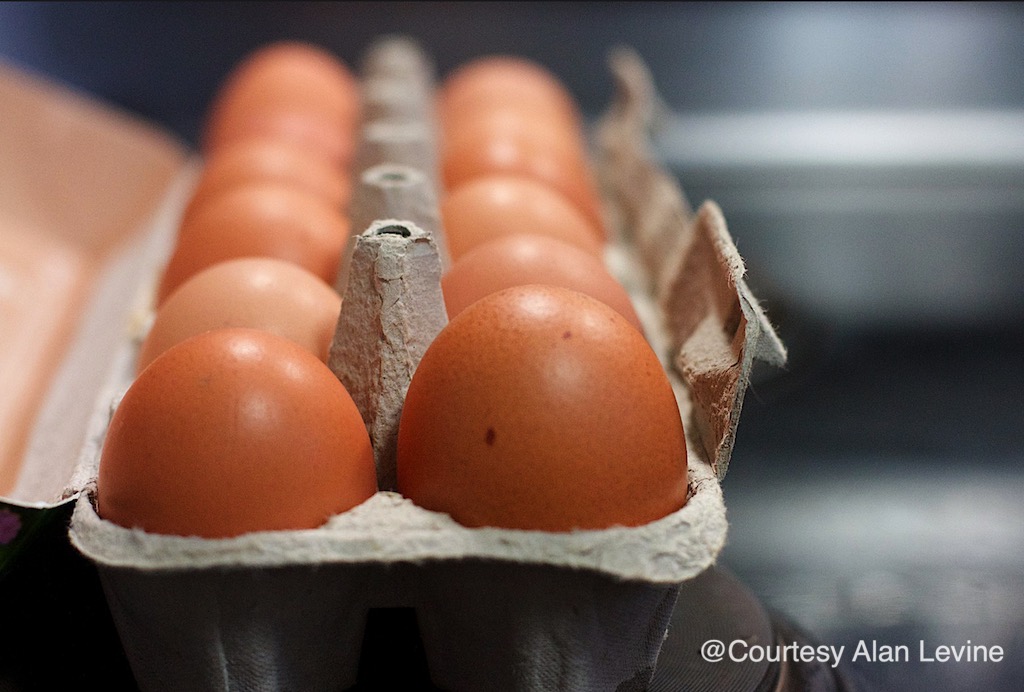
All eggs have a few basic characteristics in common: They are surrounded by a protective coating, called the shell, which can either be hard (like in chicken eggs) or somewhat soft and blob-like (like in fish eggs). The shell protects the developing animal inside, and the yolk (that’s the yellow stuff in a chicken egg), provides food and nutrients for the developing animal. Many animal eggs have yolks, but some have more yolk in them than others. Chickens, like other birds, lay eggs that are pretty big, and only a few eggs at a time, so their eggs have a lot of yolk in them. But fish lay lots and lots of eggs at once (thousands!), so their eggs often have a smaller amount of yolk.
Chicken eggs from the store don’t contain a baby bird inside because they are not fertilized. Farmers make sure the eggs don’t have everything they need to produce a baby bird.
Robin Eggs
A robin egg is another bird egg you may have seen. Robins lay small, sky-blue eggs in a cup-like nest. The eggs are much smaller than those of a chicken, and it’s amazing when you stumble upon a nest. If you do, please leave the nest and eggs alone. People used to poach (that means steal!) bird eggs, feathers, and nests, so they are now protected by law. But you can probably take a zoomed-in picture from a distance!
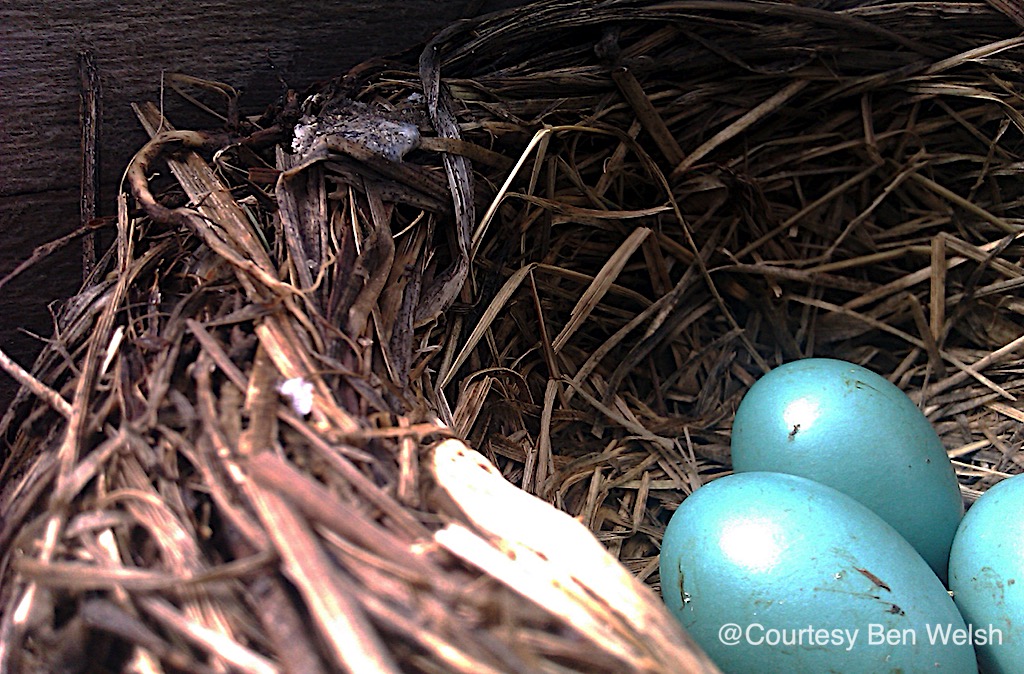
Frog Eggs
If you look carefully in spring, you might spot frog eggs in flooded fields, along creeks, or in other water sources. Unlike most birds, frog parents don’t take care of their eggs; instead, they lay lots of clear, translucent eggs, and the eggs then develop into a larval stage (a tadpole). Before the eggs hatch into tadpoles, you can actually see the tadpoles inside the eggs! Not all of those eggs survive to become frogs; many of them die or are eaten by predators. A tadpole spends its time eating lots of algae and plankton, and eventually it transforms into an adult frog. This process is called metamorphosis.
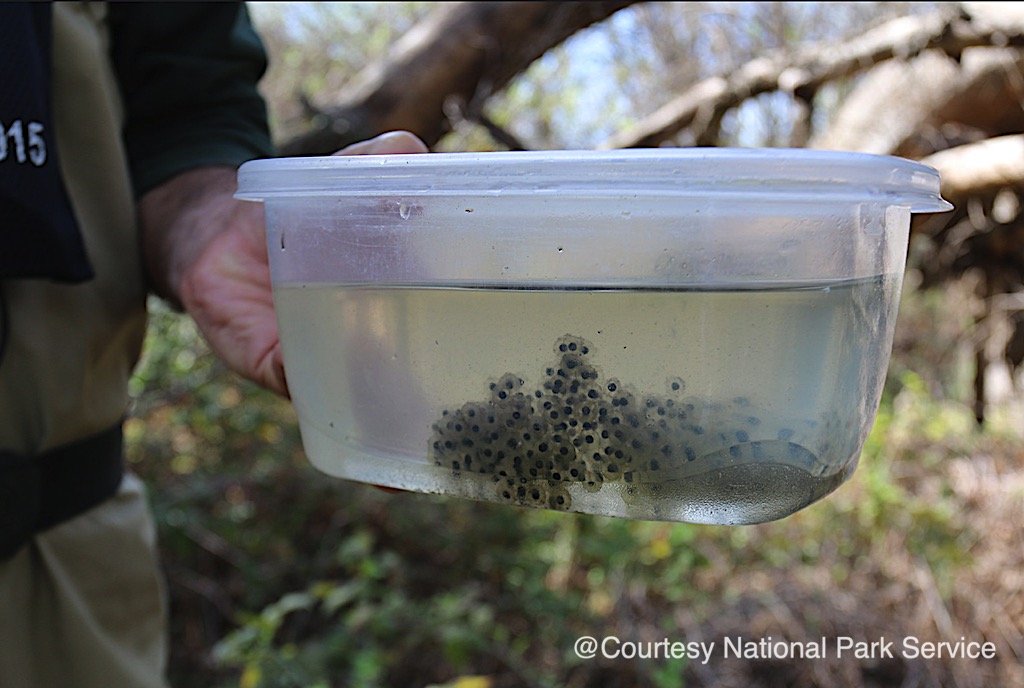
Rainbow Trout and Other Fish
You might have heard of the rainbow trout, a popular kind of sport fish. Rainbow trout lay their eggs in a special spot in river gravel, and the baby trout are born with a tiny egg sac attached to them. They depend on this egg sac for a time until they start feeding. After that, they are known as parr (small fish); not many survive to become adults, but enough do to keep the species going.
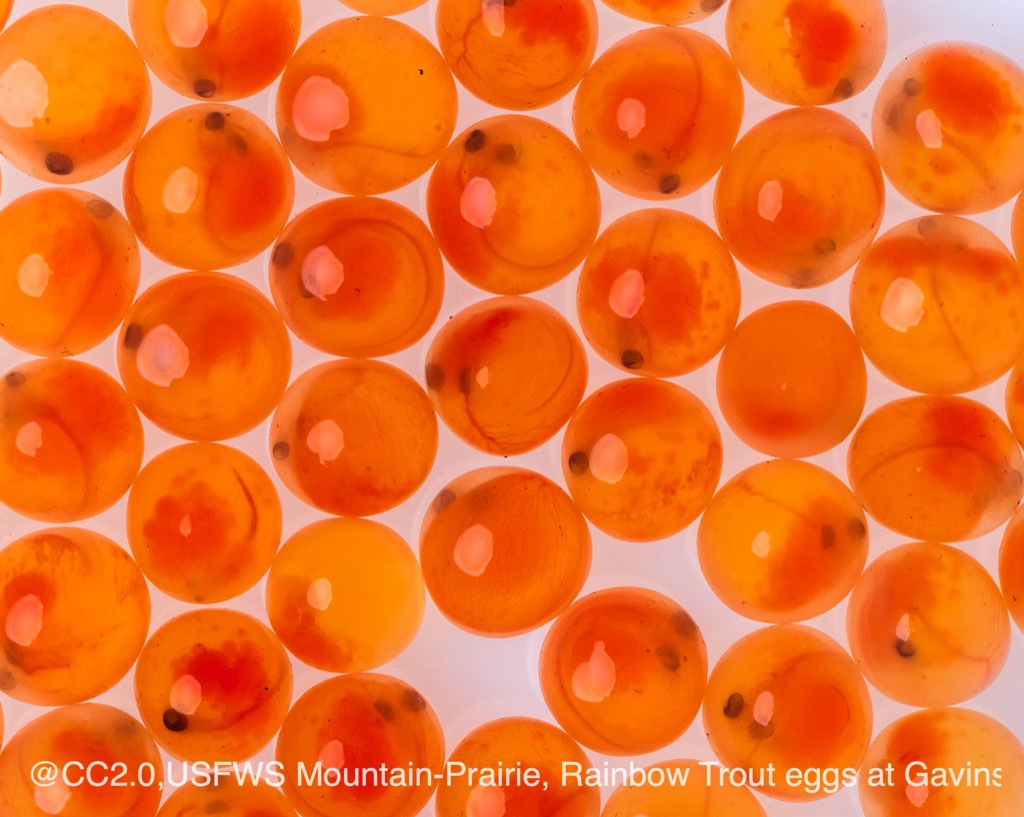
Insect Eggs
Insects also lay eggs, but these tiny eggs are often tough to spot unless you know where to look.
Butterflies
Butterflies often lay their eggs on the leaves (or undersides) of specific plants. The eggs are often some shade of green to blend in with their surroundings. The eggs hatch to become caterpillars (larvae), and the larvae eat the leaves of these “host plants.” Eventually, the larvae build a chrysalis, an oval structure that protects them while they go through metamorphosis, the process of turning into adult butterflies.
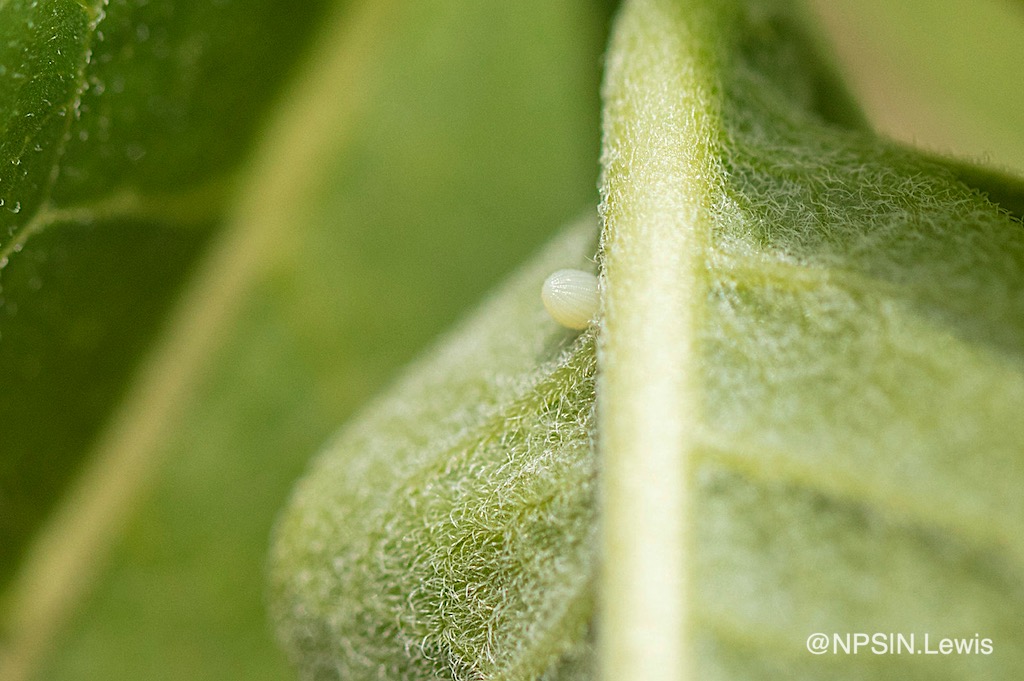
Bees and Wasps
There are many kinds of bees and wasps. Some, like honeybees, lay their eggs in a complex structure called a hive. Other bees and wasps are solitary—they don’t live in a group or a hive—laying their eggs in cavities in wood or in the ground.
Since you’re likely to see a paper wasp nest or a honeybee hive at some point, we’ll discuss those here.
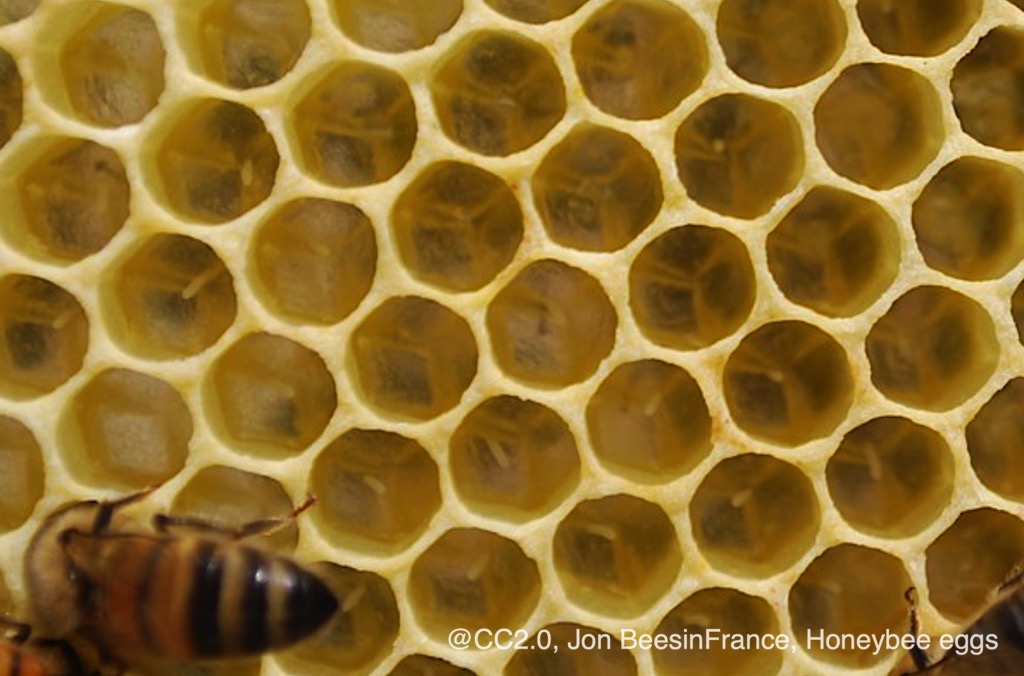
Honeybees build special nests called hives. In a beehive, there’s usually only one female capable of laying eggs at one time—the queen. She does so almost constantly, laying each egg in a special room-like structure in the hive called a honeycomb. The egg is just a tiny, white rice-like structure, surrounded by yolk, and once it hatches, it is fed by worker bees.
Paper wasps build their special (and easy to spot) nest out of plant materials and saliva (spit!), and it consists of a tough papery material divided into room-like sections. The queen of the nest lays tiny brown eggs in these sections, where they develop into grub-like larvae. Paper wasps build their nests in protected places, such as underhangs on houses, and in this author’s experience—even under the handle of a gas grill (ouch!).
So, even if you have to hold your Easter egg hunt indoors or in the backyard this year, rest assured that there are probably other eggs out there to notice and learn about!
If you enjoyed reading about this natural Easter egg hunt, please sign up for our newsletter now!


